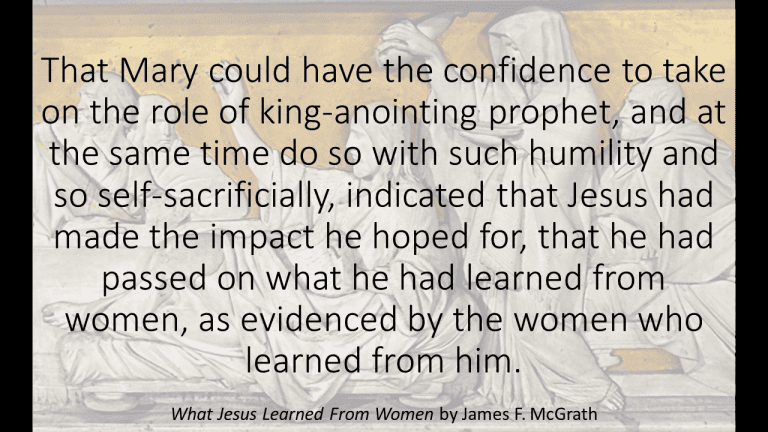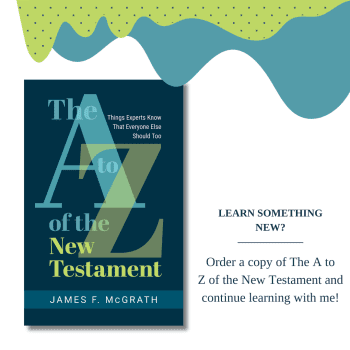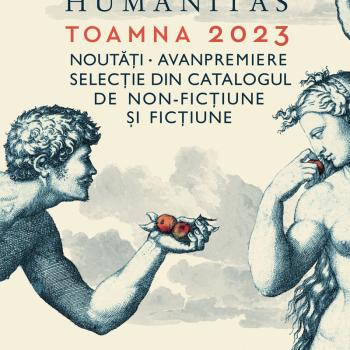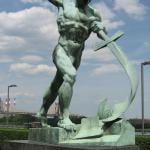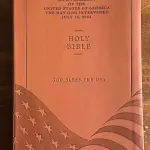I had a few questions shared with me that occurred to a listener while listening to my appearance on WFYI’s “All IN” on March 31st. You can listen to the show on the station’s website as well as the main NPR site.
Here are the things they were interested in hearing more about:
Role of women in the Old Testament and Jewish faith – any potential impact on Jesus – how it differs from the New Testament and Christianity.
One of the things that appears throughout my book, but could be the focus of an article (or could even have been a chapter in the book in its own right if it hadn’t made more sense to weave it into other chapters) is the influence of the stories of women in scripture on Jesus. When Jesus learned from the scriptures he learned from Tamar (who undoubtedly came to mind when talking with the Samaritan woman, as likely did Sara from the book of Tobit) and Susanna (relevant to the story in John 8), not to mention Deborah, Hannah, Ruth, Esther, and Judith. We can imagine Jesus having an aha moment rather like some of our Southern Baptist contemporaries have been, where they discover that the Bible doesn’t support the patriarchy taken for granted in much of the society around them.
That’s in addition to the Jewish women he knew, who were famous in his time, and were part of post-biblical Jewish history that he would have been familiar with. The book focuses on women he knew or at least met, but in addition there were surely others. (Let me also add that Bernadette Brooten’s work on women leaders in synagogues and elsewhere in ancient Judaism still hasn’t had the impact on our perception of Jesus’ time that it deserves to and ought to).
What possible insights do the Gnostic Gospels- or any other excluded texts- hold regarding women in the church.
This one intersects directly with by book as well. I wove in elements from the Protoevangelium of James, which is not a Gnostic text, as well as two works that are usually categorized that way, the Gospel of Thomas and the Gospel of Philip. None of those works is “feminist” in the modern sense, but there definitely are mentions of women in leadership in extracanonical texts that testify to views different from those that dominated in developing orthodoxy. These works were not so much excluded as simply not included, all of them being composed late enough not to be serious contenders to become part of the canon. But many in the Catholic tradition know St. Anne the mother of Mary whose story is told in the Protoevangelium (or Infancy Gospel) of James. Not being part of the Bible doesn’t automatically make a text unorthodox. Nor does it automatically mean it isn’t useful to historians. Just as historians cannot simply assume that things in our canonical sources are historical, details in extracanonical ones require the same scrutiny and may potentially be judged historical. Such instances may be rare, but a few of those exceptional cases are discussed in my book.
What about examples of women prophets during Jesus time?
We know relatively little about prophecy in Jesus’ time. However, both in her poetic words about social justice and in her statements about the future (but especially in the two going hand in hand in the Magnificat) we find Mary depicted as a prophet in the same sense that her son Jesus was perceived to be one.
What other questions do readers of this blog have stemming from my book and/or the discussions of it in the media?
Of related interest:
Everyone should read Beth Barr’s account of how teaching Romans 16 prompted her to speak out on women in Christian leadership. Beth Moore’s departure from the SBC is also related to that topic.
Beth Moore apologized for teaching complementarianism (see also John Fea’s comments on this news and those of Beth Stoneburner).
The post on exorcism and Beelzebul on the same blog also has a connection to the book.
Bible Odyssey keeps adding content related to biblical women. See for instance Charles Halton on the story of Ruth, “Seduction on the Threshing Floor.”
If you don’t already follow it, Marg Mowczko’s blog is an important one to stay updated on if you are interested in women in the Bible.
An interesting reference to the Widow’s Mite can be found in the Visual Commentary on Scripture.
